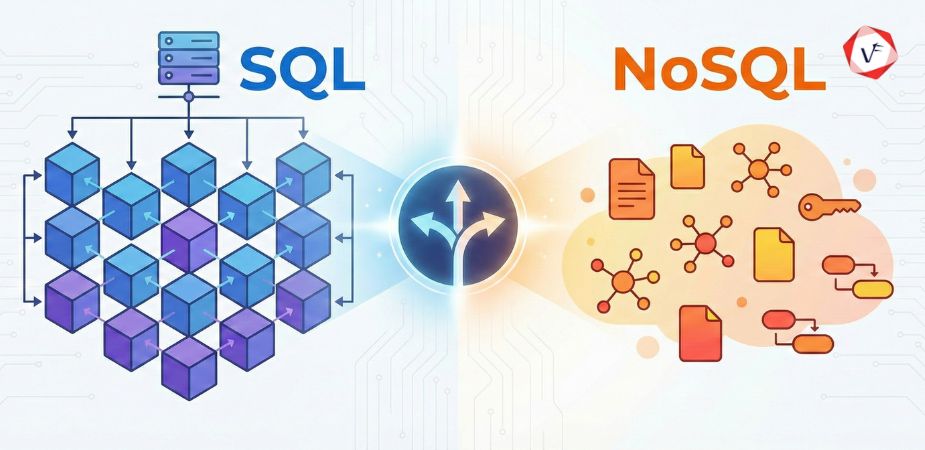DevOps is where the software development and services meet to guarantee continuous integration (CI) and continuous delivery (CD). Earlier, the development and the service sides were viewed as two separate entities and were used for handling different dimensions in a software cycle. However, development teams could potentially encounter numerous limitations by following these traditional paths and some of them are increased development time, low throughput, etc.
Extended production time, enhanced communication, decreased cost, and deployment failures are some of the key benefits that encourage businesses to hire DevOps Engineers from offshore software development company in India. For a company to effectively harness the full potential of DevOps, they need to leverage five major methods, i.e.
- Communication
- CI/CD
- Configuration Management
- Security
- Monitoring & Alerting.
Top 10 DevOps Tools
As technology progresses, numerous DevOps tools have been extended to make collaboration and development more comfortable. To help you improve your DevOps strategy, we will list out some of the top 10 DevOps tools that will enable you to boost your software development and take your business to the next level.
1. Slack
- Launched in the year 2013
- Slack is one of the best communication tools used by developer teams for efficient collaboration
- It is used by technical organizations across the globe to deliver team members a clear insight of their workflow
- It allows developers to cooperate using toolchains in the same environment they are interacting with different support and service members
2. Jenkins
- Jenkin is an open-source continuous integration server
- It automates the whole development cycle of a software project
- Jenkins is used by the developers to automatically commit code into the repository, run test cases, and fetch reports obtained after testing
- It is a highly customizable tool and provides instant feedback
- It will notify you if a particular sprint is pointing to a broken build or is harming the same
- Most of the tasks and tools included in SDLC can be automated using Jenkins.
3. Docker
- Docker is a tool that is at the center of containerization
- It allows safe packaging, deploying, and controlling of applications regardless of their running environment
- Every application container here contains the source code, supporting files, run time, system config files, etc. accountable for application execution
- Using the Docker Engine, the containers can be obtained which in turn can accomplish applications in a remote environment.
- As per some studies, reports show that 2 out of 3 companies who have tried this application have chosen it within 30 days of practicing it.
4. Phantom
- The Phantom tool comes as a great help to developers who wish to build a proper and safe infrastructure from the very beginning of SDLC
- You can collaborate in a centralized environment on an incident when using the Phantom tool.
- You can also get notified about any security threats that may affect your application.
- The tool further gives DevOps engineers an option to mitigate such risks immediately using methods such as file detonation, device quarantine, etc.
5. Nagios
- Nagios is also Similar to Phantom a tool that comes handy for large groups which have an infinite number of circuitry like routers, servers, switches, etc. in the backend
- It notifies the users in case a critical fault transpires on the backend or any device crashes
- It also automatically supports a performance chart and monitors trends to inform the user of a potential crash that may happen.
6. Vagrant
- A vagrant is a tool for handling and operating with virtual machines in a single workflow.
- Handling Vagrant, team members can share software running environments and can test applications quickly without consuming additional time especially for setting up configurations.
- The tool guarantees that the environment for a distinct project remains the same beyond every developer’s machine.
7. Ansible
- Ansible is one of the various simple yet efficient IT orchestration and configuration management tools obtainable in the market.
- Compared to its rivals such as Puppet and Chef, which are loaded with characteristics, Ansible offers a more flexible outlook and doesn’t hog on your device’s support in the background.
- This tool is primarily used for pushing new modifications within the current system, as well as configuring freshly deployed machines.
- Lowering the costs of support and improving the replication speed of scalability are two of the reasons which have presented this as an authoritative favorite amongst IT businesses.
8. GitHub
- Launched in the year 2000, GitHub continues to be one of the top DevOps tools for simple collaboration.
- By leveraging this tool, developers can create rapid repetitions to the code, the notification of which is transmitted immediately to other team members.
- In case of any failure or fallout, immediate rollbacks can be done to the earlier version in seconds.
- Thanks to the branched records of variations that are stored contiguously inside the tool.
9. Sentry
- It is one of the most reliable DevOps tools for failure or bug detection used by tech giants like Uber and Microsoft.
- This easy tool supports languages such as Ruby, IOS, JavaScript, etc.
- It also has inbuilt SDKs which can be customized for maintaining most other prominent languages and frameworks.
- The tool continuously examines lines of code across the entire system and transfers notifications if it encounters an error or intricacy.
- Not only does it highlight the difficulty, but offers a variety of possible resolutions that can be included with a single click.
10. BitBucket
- Similar to GitHub, BitBucket is also a tool that supports managing project code during the software development cycle.
- While GitHub still stands as the top repository, people are moving to BitBucket due to its discounted cost as well as the peculiarity of the private repository
- While the core functionality of BitBucket matches that of GitHub, specialties such as easy integration with Jira and Trello, inbuilt CI/CD functionality serve to give this tool by Atlassian an advantage.
Conclusion
So, these were the top 10 DevOps tools that are being frequently chosen by companies over the globe. If you think that there are any more reliable tools that we dropped, don’t forget to introduce them in the comment section below.



